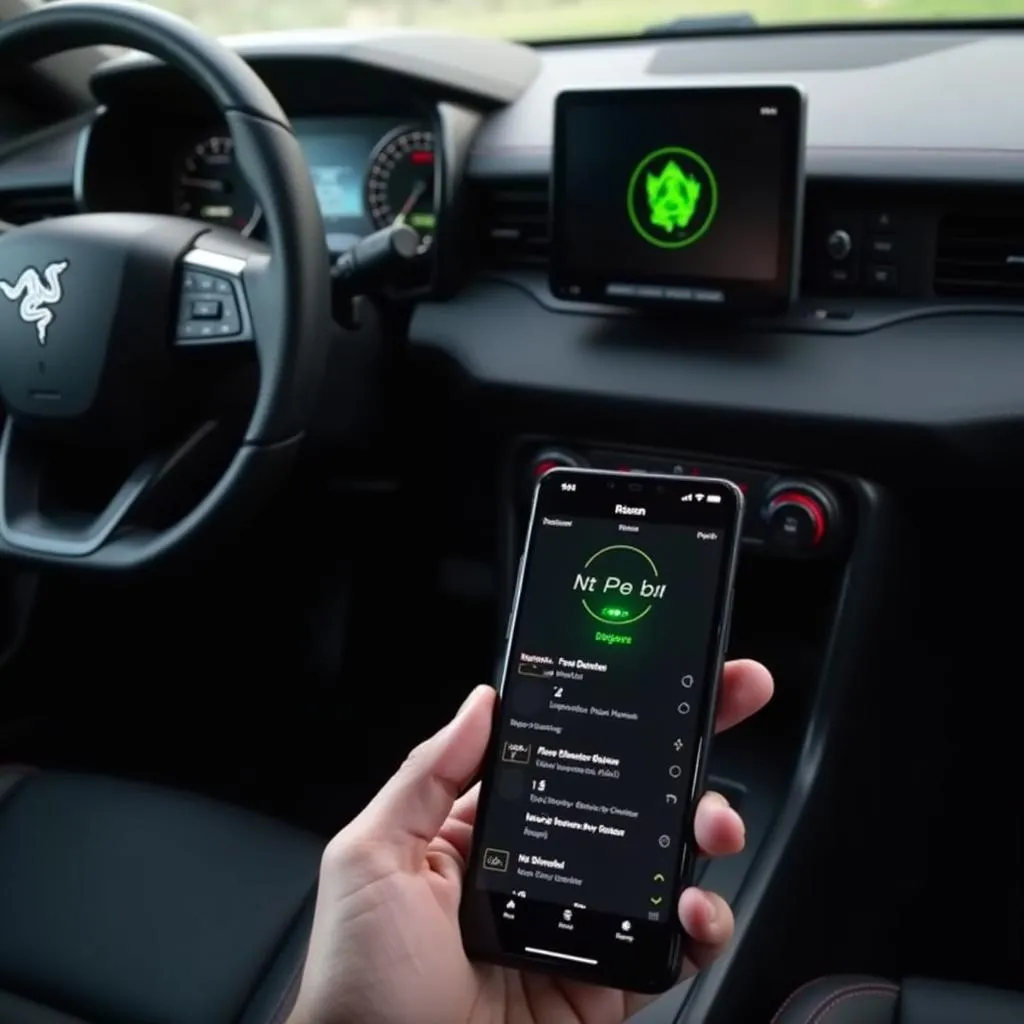Loose battery terminals are a common cause of car battery drain and starting problems. When your battery terminals are loose, the connection between your battery and your car’s electrical system is compromised. This can lead to a variety of issues, including a dead battery, dimming lights, and even a car that won’t start.
Why Loose Battery Terminals Matter
Your car’s battery provides the electrical current needed to start the engine and power various electrical components. The battery terminals, positive (+) and negative (-), act as the gateway for this electrical flow. When terminals are loose, they create resistance, hindering the current flow and leading to several problems:
- Battery Drain: Loose connections prevent the battery from charging properly while driving, eventually leading to a dead battery.
- Starting Issues: Insufficient current flow due to loose terminals can make it difficult or impossible to start your car.
- Electrical Malfunctions: Dimming headlights, flickering interior lights, and malfunctioning electronic accessories can all be symptoms of loose battery terminals.
How to Identify Loose Battery Terminals
Inspecting your battery terminals is a simple process:
- Safety First: Before touching anything, ensure the engine is off and the key is out of the ignition.
- Locate the Battery: The battery is usually located under the hood, but refer to your owner’s manual for its exact location in your vehicle.
- Visual Inspection: Check for any visible signs of looseness, such as terminals that move easily or have a gap between the terminal and the battery post.
- Physical Check (With Caution): Gently try to wiggle the positive and negative battery clamps. If they move easily or you can rotate them by hand, the terminals are loose.
Tightening Loose Battery Terminals: A Step-by-Step Guide
If you discover loose battery terminals, tightening them is crucial:
- Gather Supplies: You’ll need a wrench (usually 8mm, 10mm, or 13mm), a wire brush, and protective gloves.
- Disconnect the Negative Terminal First: Loosen the nut on the negative (-) terminal clamp and carefully remove the clamp from the battery post.
- Clean the Terminals: Using the wire brush, clean the battery posts and the inside of the clamps to remove any corrosion or dirt.
- Reconnect the Negative Terminal: Place the negative terminal clamp back onto the negative post and tighten the nut securely.
- Repeat for the Positive Terminal: Follow the same cleaning and reconnecting process for the positive (+) terminal.
- Apply Protective Coating (Optional): Applying dielectric grease or petroleum jelly to the terminals after tightening can help prevent future corrosion.
When to Seek Professional Help
While tightening loose battery terminals is often a simple DIY task, there are instances when seeking professional assistance is advisable:
- Excessive Corrosion: If you encounter heavy corrosion on the battery terminals or posts, professional cleaning might be necessary.
- Damaged Terminals or Battery: If the terminals or the battery itself are physically damaged, replacement might be required.
- Persistent Electrical Issues: If tightening the terminals doesn’t resolve your electrical problems, there might be an underlying electrical issue that requires diagnosis and repair.
“It’s always better to err on the side of caution,” says John Miller, a certified automotive electrician with over 20 years of experience. “If you’re unsure about any aspect of battery terminal maintenance, seeking professional help can save you time, money, and potential headaches down the road.”
Preventing Loose Battery Terminals
Taking preventative measures can help avoid the hassle of loose battery terminals in the future:
- Regular Inspections: Inspect your battery terminals every few months, especially during extreme weather conditions.
- Keep Terminals Clean: Regularly clean any dirt or corrosion buildup on the terminals and posts.
- Proper Tightening: Ensure the battery terminals are tightly secured during installation or after any maintenance.
By understanding the causes, symptoms, and solutions related to loose battery terminals, you can ensure your car battery stays healthy and your vehicle starts reliably every time. Remember, a little preventative maintenance goes a long way in avoiding unexpected breakdowns and expensive repairs.


